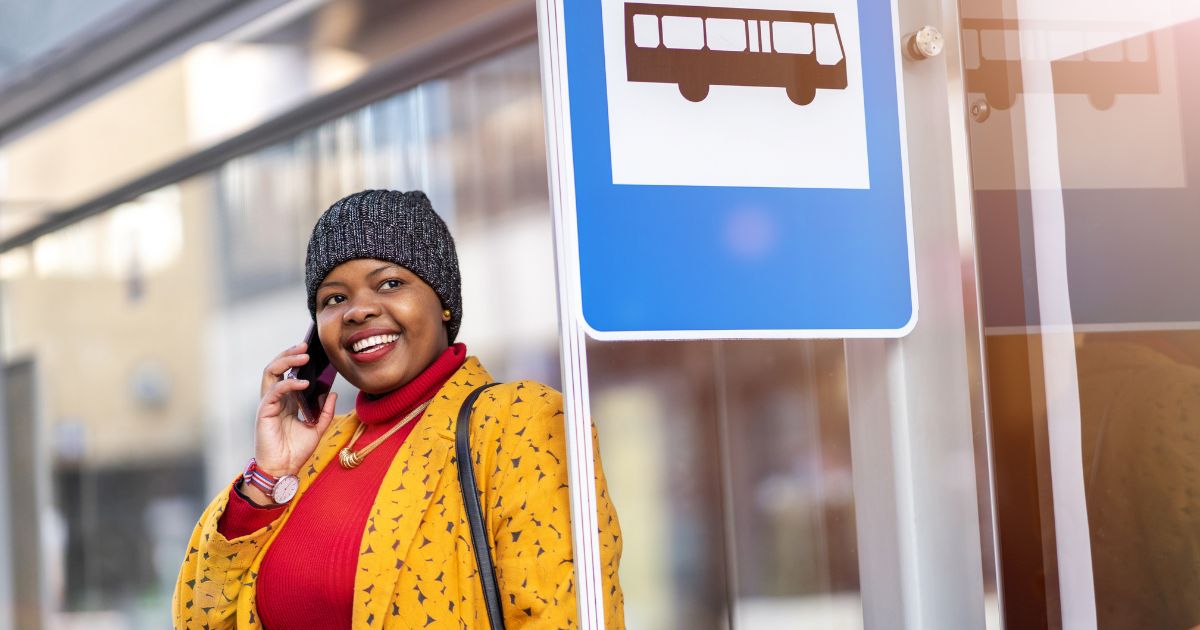
What if improving your physical and mental health was as easy as riding the bus?
Breathing fresh air, driving safely, being physically active, and avoiding excessive stress are a few of the well-known steps toward living a healthy life style. Actually, using public transit supports all of the above! The Victoria Policy Institute and the American Public Transportation Association explored the health impacts of transit, and here is what they found:
1) Public transit users are more active.
Individuals who use public transportation get over three times the amount of physical activity per day of those who don’t (approximately 19 minutes, rather than six minutes) by walking to stops and final destinations. The U.S. Center for Disease Control recommends 22 minutes of moderate physical activity, such as brisk walking, per day (or 150 minutes per week). Getting active helps lower the risk for many serious diseases, such as: heart and vascular diseases, strokes, diabetes, hypertensive diseases, osteoporosis, joint and back problems, colon and breast cancers, and depression.
2) Buses are safer than individual vehicles.
Bus related accidents have one-twentieth the passenger fatality rates of automobile travel. Car accidents are responsible for approximately 40,000 deaths (and many more injuries) per year, making them one of the largest causes of death for people aged 1-44. Traveling on public transit significantly diminishes this threat. Moreover, areas with high public transit movement tend to have better overall security and reduced crime rates.
3) Public transportation reduces stress.
Public transportation improves access to education and employment, which in turn leads to better long-term economic opportunities. In fact, 12 percent of transit riders are traveling to schools and almost 60 percent are going to work. It also provides access to social and recreational activities, allowing individuals to participate in events they otherwise couldn’t. Furthermore, public transit benefits community cohesion by promoting positive interactions between neighbors. Studies have found that even casual interactions with familiar strangers, such as greeting your driver or fellow passengers, help improve emotional well-being and resilience.
4) Public buses keep air cleaner.
Pollution is estimated to cause as many deaths per year as traffic accidents. However, buses (especially newer diesel and electrically powered vehicles) produce less pollution than cars per passenger mile by utilizing advanced technologies and higher standards. In fact, from 1992-2009, buses using alternative fuels (such as natural gas) jumped from 2 to 30 percent and electric rail transit increased from 29 to 34 percent of passenger miles. And the transit sector remains one of the largest contributors to the greenhouse gas emissions driving climate change.
5) Riding public transportation saves money.
“Affordable transportation” generally means that an individual’s total travel expenses make up less than 20% of their household finances. Car payments, gas prices and parking can be a major budget drain, but public transportation lessens those financial burdens by alleviating the need to purchase and operate individual vehicles (saving a household around $6,251 annually) and helping riders avoid parking fees. This supports public health by leaving riders with more money for better living arrangements, healthy food, and medical services.
6) Public transportation provides access to essential needs later in life.
A survey of Americans aged 65 and older found that non-drivers take 15% fewer trips to the doctor, 59% fewer shopping trips and restaurant visits, and 65% fewer trips for social, family, and religious activities than those using an individual vehicle. Public transportation is a way for these non-drivers (particularly low-income seniors and disabled individuals) to gain access to important services and activities that improve public health such as: healthcare appointments, basic shopping, banking, education, and employment opportunities.
The benefits of public transportation are expansive, ranging from public health to household finances. You can learn more about the dangers posed by inequitable transit in this post.